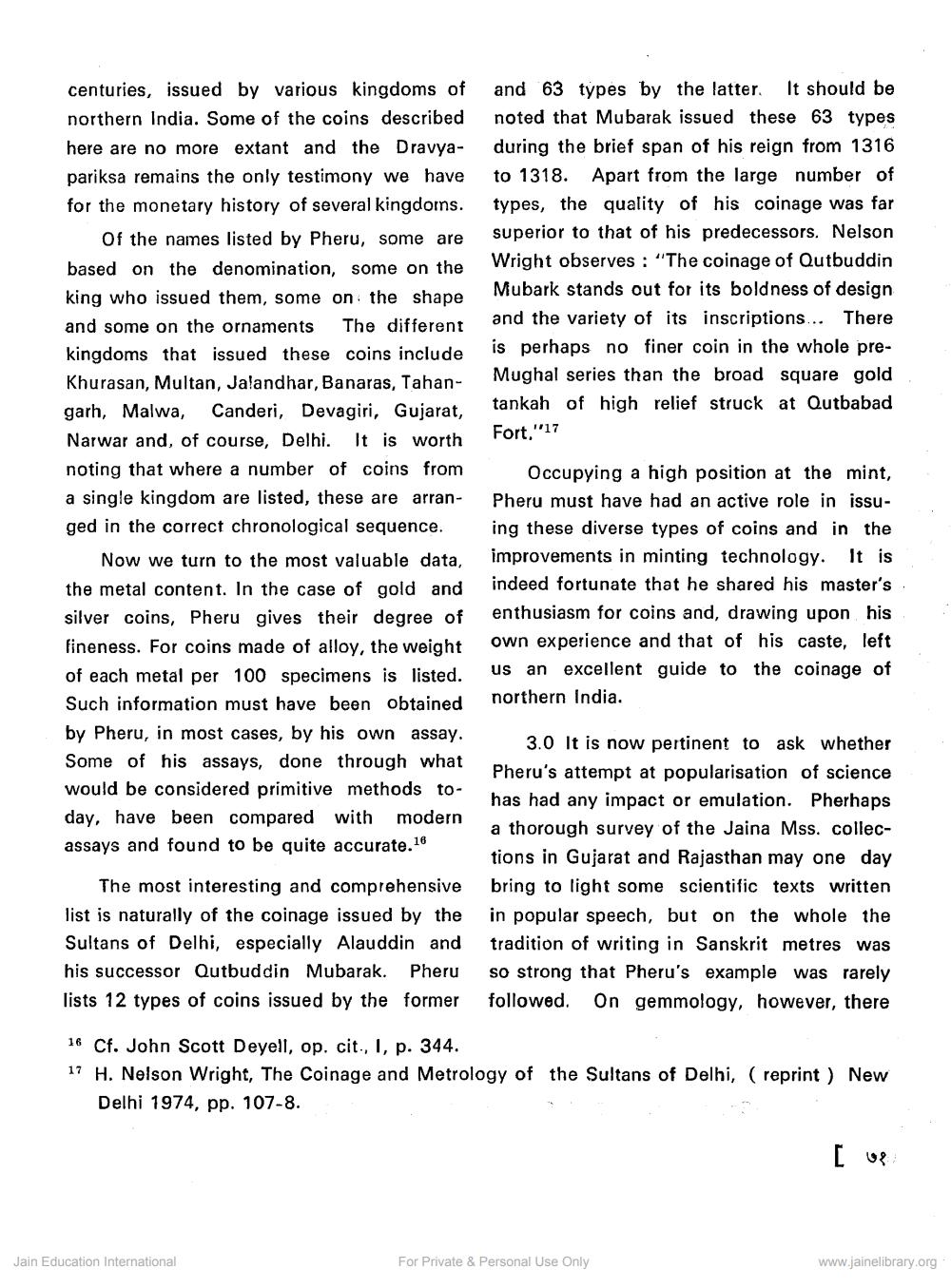Book Title: Thakkura Pheru and Popularisation of Science in India in 14th Century Author(s): Sreeramula Sarma Publisher: Z_Bhanvarlal_Nahta_Abhinandan_Granth_012041.pdf View full book textPage 9
________________ centuries, issued by various kingdoms of northern India. Some of the coins described here are no more extant and the Dravya- pariksa remains the only testimony we have for the monetary history of several kingdoms. Of the names listed by Pheru, some are based on the denomination, some on the king who issued them, some on the shape and some on the ornaments The different kingdoms that issued these coins include Khurasan, Multan, Jalandhar, Banaras, Tahangarh, Malwa, Canderi, Devagiri, Gujarat, Narwar and, of course, Delhi. It is worth noting that where a number of coins from a single kingdom are listed, these are arran- ged in the correct chronological sequence. Now we turn to the most valuable data, the metal content. In the case of gold and silver coins, Pheru gives their degree of fineness. For coins made of alloy, the weight of each metal per 100 specimens is listed. Such information must have been obtained by Pheru, in most cases, by his own assay. Some of his assays, done through what would be considered primitive methods today, have been compared with modern assays and found to be quite accurate.16 and 63 types by the latter. It should be noted that Mubarak issued these 63 types during the brief span of his reign from 1316 to 1318. Apart from the large number of types, the quality of his coinage was far superior to that of his predecessors. Nelson Wright observes : "The coinage of Qutbuddin Mubark stands out for its boldness of design and the variety of its inscriptions... There is perhaps no finer coin in the whole preMughal series than the broad square gold tankah of high relief struck at Qutbabad Fort, Occupying a high position at the mint, Pheru must have had an active role in issuing these diverse types of coins and in the improvements in minting technology. It is indeed fortunate that he shared his master's enthusiasm for coins and, drawing upon his own experience and that of his caste, left us an excellent guide to the coinage of norther 3.0 It is now pertinent to ask whether Pheru's attempt at popularisation of science has had any impact or emulation. Pherhaps a thorough survey of the Jaina Mss. collections in Gujarat and Rajasthan may one day bring to light some scientific texts written in popular speech, but on the whole the tradition of writing in Sanskrit metres was so strong that Pheru's example was rarely followed. On gemmology, however, there The most interesting and comprehensive list is naturally of the coinage issued by the Sultans of Delhi, especially Alauddin and his successor Qutbuddin Mubarak. Pheru lists 12 types of coins issued by the former 16 Cf. John Scott Deyell, op. cit., I, p. 344. 17 H. Nelson Wright, The Coinage and Metrology of the Sultans of Delhi, (reprint) New Delhi 1974, pp. 107-8. [ op Jain Education International For Private & Personal Use Only www.jainelibrary.orgPage Navigation
1 ... 7 8 9 10
